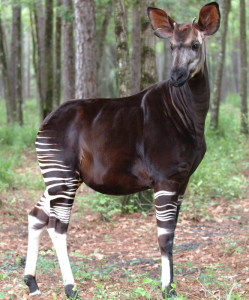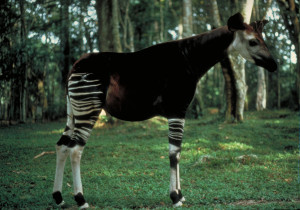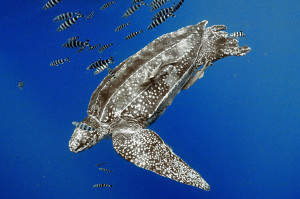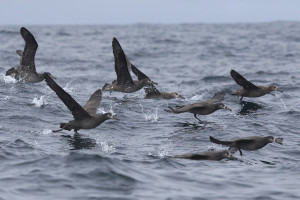FOREST GIRAFFE JOINS GROWING NUMBER OF THREATENED SPECIES
FOREST GIRAFFE JOINS GROWING NUMBER OF THREATENED SPECIES
The Okapi – a national symbol of the Democratic Republic of the Congo, also known as the “forest giraffe” – and the sub-Saharan White-winged Flufftail – one of Africa’s rarest birds – are now on the brink of extinction, according to the latest update of The IUCN Red List of Threatened Species™. Two species of albatross, the Leatherback Turtle and the Island Fox native to California’s Channel Islands are showing signs of recovery.

A total of 71,576 species have now been assessed, of which 21,286 are threatened with extinction.
The update highlights serious declines in the population of the Okapi (Okapia johnstoni), a close relative of the giraffe, unique to the rainforests of the Democratic Republic of the Congo (DRC). The species is now Endangered, only one step away from the highest risk of extinction, with numbers dwindling across its range. Poaching and habitat loss, as well as the presence of rebels, elephant poachers and illegal miners, are the principal threats to its survival.

“The Okapi is revered in Congo as a national symbol – it even features on the Congolese franc banknotes,” says Dr Noëlle Kümpel co-chair of the IUCN SSC Giraffe and Okapi Specialist Group and manager of ZSL’s range-wide okapi conservation project. “Sadly, DRC has been caught up in civil conflict and ravaged by poverty for nearly two decades, leading to widespread degradation of Okapi habitat and hunting for its meat and skin. Supporting government efforts to tackle the civil conflict and extreme poverty in the region are critical to securing its survival.”

According to the update, almost 200 species of bird are now Critically Endangered, facing the highest risk of extinction. The White-winged Flufftail (Sarothrura ayresi), a small, secretive bird which occurs in Ethiopia, Zimbabwe and South Africa, is the latest species to join this category. Destruction and degradation of its habitat, including wetland drainage, conversion for agriculture, water abstraction, overgrazing by livestock and cutting of marsh vegetation, have driven it to this precarious state. Urgent action is now needed to better understand the species’ ecology and to address these threats.
Although the global population of the Leatherback Turtle (Dermochelys coriacea) – the largest of all living turtles – has improved from Critically Endangered to Vulnerable, the species continues to face serious threats at a subpopulation level.
Leatherbacks are a single species, globally comprising seven biologically and geographically distinct subpopulations. The Northwest Atlantic Ocean Leatherback subpopulation is abundant and increasing thanks to successful conservation initiatives in the region. In contrast, the East Pacific Ocean subpopulation, which nests along the Pacific coast of the Americas, and the West Pacific Ocean subpopulation, found in Malaysia, Indonesia, Papua New Guinea and the Solomon Islands, are both in severe decline due to extensive egg harvest and incidental capture in fishing gear. Targeted conservation efforts are needed to prevent their collapse.
This IUCN Red List update also brings good news for some of the species assessed.

Two species of albatross – one of the most threatened of the planet’s bird families – are now at a lower risk of extinction due to increases in their populations. The Black-browed Albatross (Thalassarche melanophrys) has moved from Endangered to Near Threatened and the Black-footed Albatross (Phoebastria nigripes) has moved from Vulnerable to Near Threatened. By-catch in fisheries is the main threat to these species.
The Island Fox (Urocyon littoralis), previously Critically Endangered, has also improved in status and is now listed as Near Threatened. Found on six of the California Channel Islands off the coast of southern California, four Island Fox subspecies suffered catastrophic declines in the mid 1990s mainly due to disease and predation by non-native species, such as the Golden Eagle. All four subspecies have now recovered or are approaching recovery. This is mainly due to successful conservation work of IUCN Member the U.S. National Park Service, which included captive breeding, reintroduction, vaccination against canine diseases and relocation of Golden Eagles.

“This IUCN Red List update shows some fantastic conservation successes, which we must learn from, for future conservation efforts,” says Jane Smart, Global Director, IUCN Biodiversity Conservation Group “However, the overall message remains bleak. With each update, whilst we see some species improving in status, there is a significantly larger number of species appearing in the threatened categories. The world must urgently scale up efforts to avert this devastating trend.”
